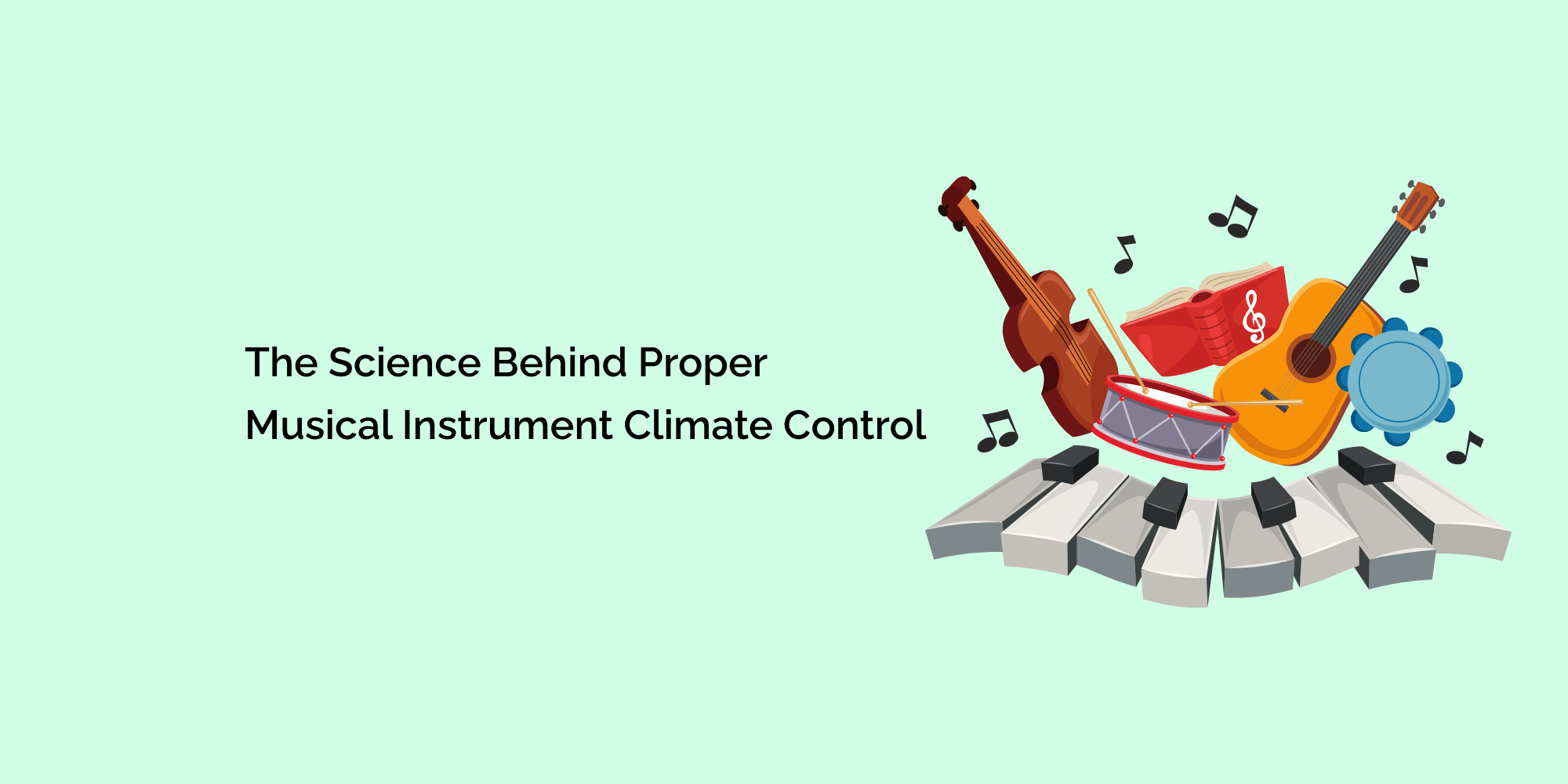The world of music is a delicate blend of creativity, technique, and emotion. Behind every captivating melody and soul-stirring composition lies a symphony of intricate craftsmanship. However, the longevity and quality of musical instruments are contingent on more than just skillful hands; they're deeply affected by the surrounding environment, particularly temperature and humidity. In this blog, we will dive into the science behind proper musical instrument climate control, exploring how these factors interact with instruments and why maintaining precise conditions is essential for preserving their integrity and enhancing their performance.
The Dance of Temperature and Humidity:
Temperature and humidity are two interconnected variables that profoundly impact musical instruments:
-
Temperature: Fluctuations in temperature cause materials to expand or contract, which can lead to warping and structural damage.
- Humidity: Changes in humidity levels can cause wood to absorb or release moisture, resulting in swelling, cracking, or shrinking.
Wood's Susceptibility:
Wood, a primary material in many instruments, is particularly sensitive to climate variations:
-
Wood Hygroscopicity: Wood has the ability to absorb and release moisture in response to changes in humidity, affecting its dimensions.
-
Anisotropic Behavior: Wood doesn't expand or contract uniformly in all directions, leading to potential distortions in instrument components.
- Complex Relationships: The interplay between temperature and humidity can lead to intricate reactions within the wood fibers.
Impact on Sound Quality:
The relationship between climate control and sound quality is profound:
-
String Instruments: Instruments like violins and cellos rely on precise dimensions for optimal sound projection. Climate changes can alter these dimensions and affect sound quality.
- Brass and Wind Instruments: Fluctuations in temperature and humidity can impact the resonance and tonal qualities of these instruments.
Optimal Climate Conditions:
Achieving the right balance between temperature and humidity is crucial:
-
Ideal Temperature: Most instruments fare well within a temperature range of 60°F to 70°F (15.5°C to 21.1°C).
- Harmonious Humidity: Relative humidity levels between 40% and 60% are generally recommended for wood instruments.
The Role of Monitoring:
Technology plays a pivotal role in maintaining precise climate conditions for instruments:
-
Real-time Data: Monitoring systems provide continuous real-time data on temperature and humidity levels.
-
Early Detection: Alerts notify musicians when conditions deviate from optimal ranges, allowing for timely intervention.
- Preventive Measures: Monitoring empowers musicians to take preventive steps before potential damage occurs.
Humidity Control Mechanisms:
Maintaining consistent humidity levels involves sophisticated techniques:
-
Humidifiers: In dry environments, humidifiers add moisture to the air to prevent wood from drying out.
-
Dehumidifiers: Humid climates can benefit from dehumidifiers, which reduce excess moisture in the air.
- Instrument Cases: High-quality instrument cases with humidity control compartments offer portable protection.
Challenges in Different Environments:
Various geographic locations present distinct climate challenges:
-
Dry Climates: Extremely dry regions require vigilant humidity control to prevent wood from cracking.
- Humid Climates: High humidity environments necessitate measures to prevent swelling, warping, and mold growth.
The Art of Preservation:
Climate control is an art that intertwines science with meticulous care:
-
Humidity Regulation: Consistent humidity levels ensure wood maintains its equilibrium moisture content, preventing distortion.
-
Wood Aging: Stable climate conditions aid in the gradual and controlled aging of wood, contributing to sound enhancement.
- Maintenance of Craftsmanship: Proper climate control ensures that the craftsmanship and tonal qualities of instruments remain intact.
Conclusion:
Musical instruments are more than mere tools; they are conduits of human expression and cultural heritage. The science behind proper climate control underscores the intricate relationship between craftsmanship and preservation. By understanding the dynamic interplay between temperature, humidity, and instruments, musicians can ensure that their cherished companions remain in optimal condition, producing melodies that resonate with both the past and the future.








